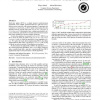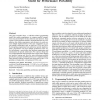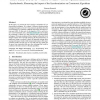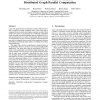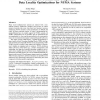PPOPP
2015
ACM
9 years 2 months ago
2015
ACM
Computational accelerators, such as manycore NVIDIA GPUs, Intel Xeon Phi and FPGAs, are becoming common in workstations, servers and supercomputers for scientific and engineering...
PPOPP
2015
ACM
9 years 2 months ago
2015
ACM
Modern graphics processing units (GPUs) include hardwarecontrolled caches to reduce bandwidth requirements and energy consumption. However, current GPU cache hierarchies are ine�...
PPOPP
2015
ACM
9 years 2 months ago
2015
ACM
Read-copy update (RCU) is a shared memory synchronization mechanism with scalable synchronization-free reads that nevertheless execute correctly with concurrent updates. To guaran...
PPOPP
2015
ACM
9 years 2 months ago
2015
ACM
This paper describes Surge, a collection-oriented programming model that enables programmers to compose parallel computations using nested high-level data collections and operator...
PPOPP
2015
ACM
9 years 2 months ago
2015
ACM
PPOPP
2015
ACM
9 years 2 months ago
2015
ACM
As modern hardware keeps evolving, an increasingly effective approach to develop energy efficient and high-performance solvers is to design them to work on many small size indepe...
PPOPP
2015
ACM
9 years 2 months ago
2015
ACM
This paper studies the effects of source-code optimizations on the performance, power draw, and energy consumption of a modern compute GPU. We evaluate 128 versions of two n-body ...
PPOPP
2015
ACM
9 years 2 months ago
2015
ACM
In this paper, we present the most extensive comparison of synchronization techniques. We evaluate 5 different synchronization techniques through a series of 31 data structure alg...
PPOPP
2015
ACM
9 years 2 months ago
2015
ACM
Large-scale graph-structured computation usually exhibits iterative and convergence-oriented computing nature, where input data is computed iteratively until a convergence conditi...
PPOPP
2015
ACM
9 years 2 months ago
2015
ACM
Many recent multiprocessor systems are realized with a nonuniform memory architecture (NUMA) and accesses to remote memory locations take more time than local memory accesses. Opt...


